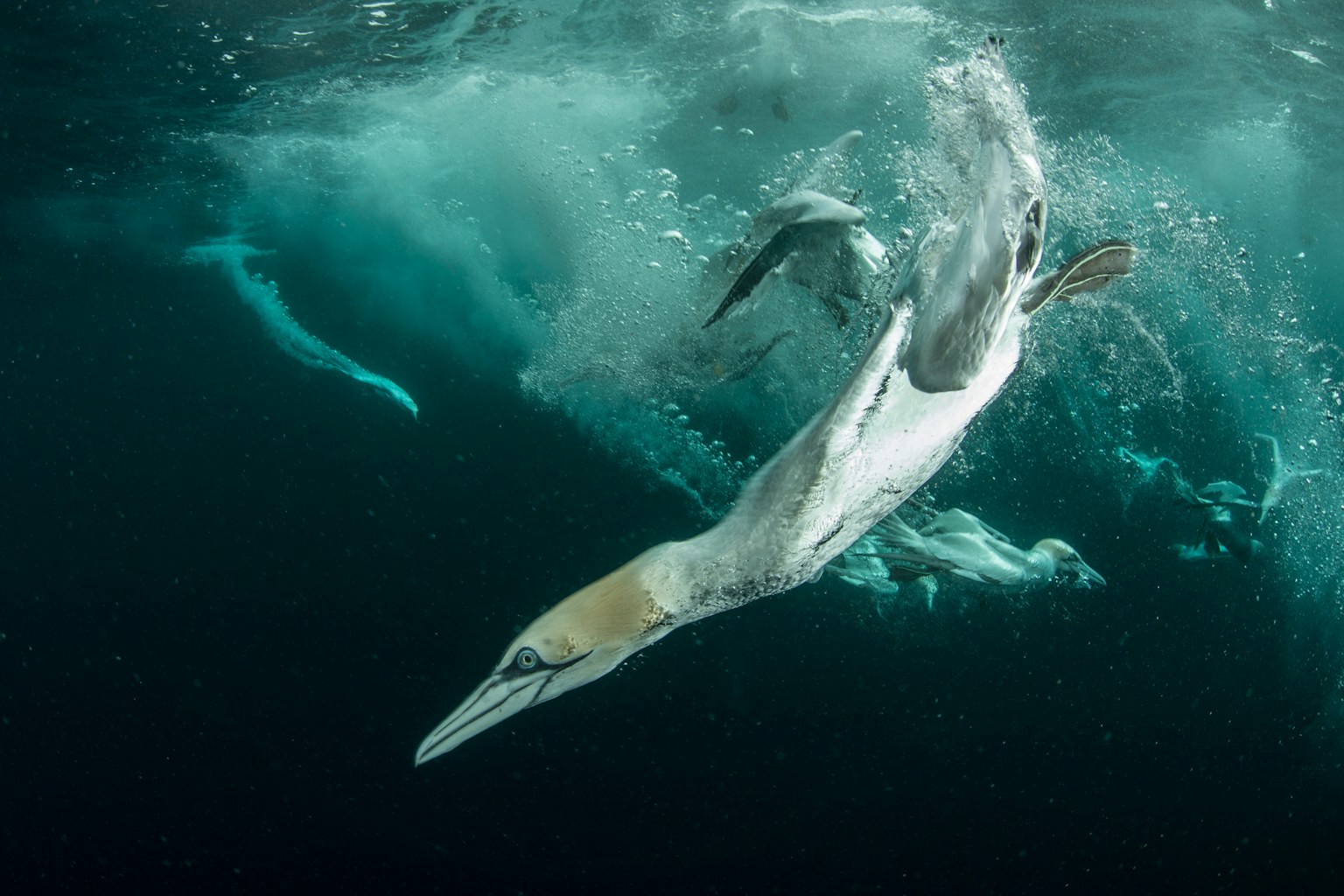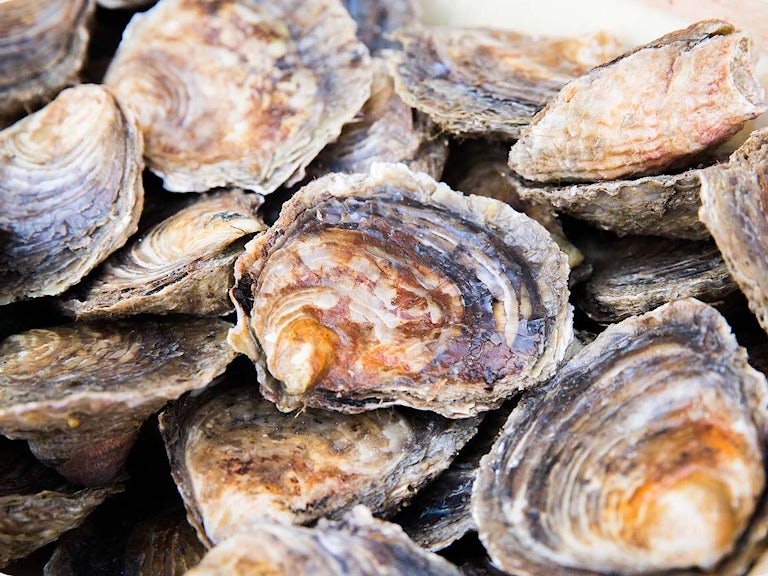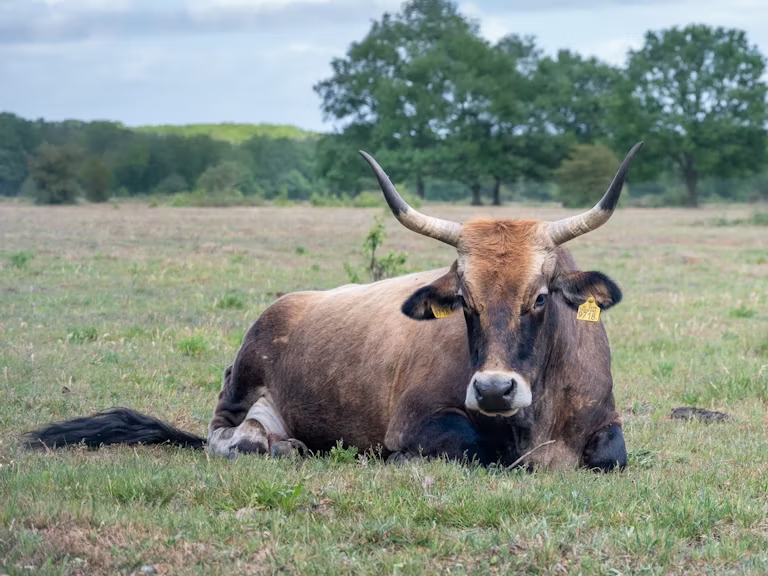European flat oyster
These unseen ecosystem engineers create habitats for other marine species, purify water and capture carbon.

How it shapes the landscape
For something that could fit in the palm of your hand, Britain’s native oyster has an incredible impact on many aspects of our environment. A single adult oyster can purify over 140 litres of water per day, removing suspended matter and excess nutrients such as nitrogen. This purification creates the conditions in which species such as butterfish, crabs and blue mussels can thrive, as well as nearby habitats such as seagrass meadows. They can also help to prevent dangerous algal blooms.
But the power of oysters goes beyond their water filtering. The three-dimensional habitats created by oyster reefs provide countless nooks and crannies in which juvenile fish can hide, protecting them from predators. The reefs are also home to sea anemones, barnacles and hooked mussels which attract larger creatures such as bass.
Oysters may not be visible from land, but their influence can certainly be felt there. The reefs dissipate wave energy, thus slowing the process of coastal erosion, while oyster shells permanently remove carbon from the ocean and atmosphere.
Where it likes to be
Young oysters (known as spat) look for firm surfaces such as stones on the seabed on which they can settle and mature. Their favourite place is on the shells of other oysters, which is how reefs grow in size. Native oysters are happiest in coastal waters and estuaries around ten metres deep, but can be found in depths of up to 80 metres. They prefer to settle somewhere muddy that is sheltered from particularly strong waves.
How much space they need
While an individual oyster may be small, by growing on top of or next to each other they form large reefs which provide 50 times the surface area of a normal ocean floor. When allowed to, these reefs can contain millions of oysters and be several metres high, stretching so far that they begin to protect the shoreline from powerful waves. Unfortunately, they’re no longer found in numbers anywhere close to what is needed to be effective in British waters.
Background story
Historically a cheap source of protein that was abundant in British seas, native oysters were hugely popular with the Romans and their fishing has formed the heart of coastal communities since then. However a combination of over-exploitation, pollution, disease, habitat loss and the introduction of non-native species has reduced the population by 95% since the 1800s.


Did you know?
Most oysters begin life as male but become females as they mature – though some can change back and forth on an annual basis.
Can we have them in Britain?
We do, but we used to have a lot more. Now they are mainly found in the southeast of England, in the Thames Estuary, the Solent and the River Fal. Since 2017 the Native Oyster Network has been working to restore the native oyster across the UK and Ireland.
The Wild Oysters Project, launched in 2021, spans 140 oyster nurseries and 4,000 oysters across three British estuaries, and is already having great effect. From nurseries suspended under marine pontoons, the oysters can begin to create ecosystems and then spread naturally. However, there is a long way to go before we see the population return to historic levels that will bring large-scale benefits to our wider marine life.
In summary
- Create ecosystems which benefit myriad marine life
- Purify their surrounding waters
- Sequester carbon in their shells
- Protect coasts from erosion
- Support local, responsible and sustainable fishing economies


We’re boosting marine rewilding
A project aiming to restore native oyster reefs and seagrass meadows in the Medway and Swale Estuary, Kent, has been awarded in the latest round of the Rewilding Innovation Fund.
Uncover the full list of recipients awarded since 2021 to see the diverse range of rewilding projects taking action across Britain’s land and sea.


